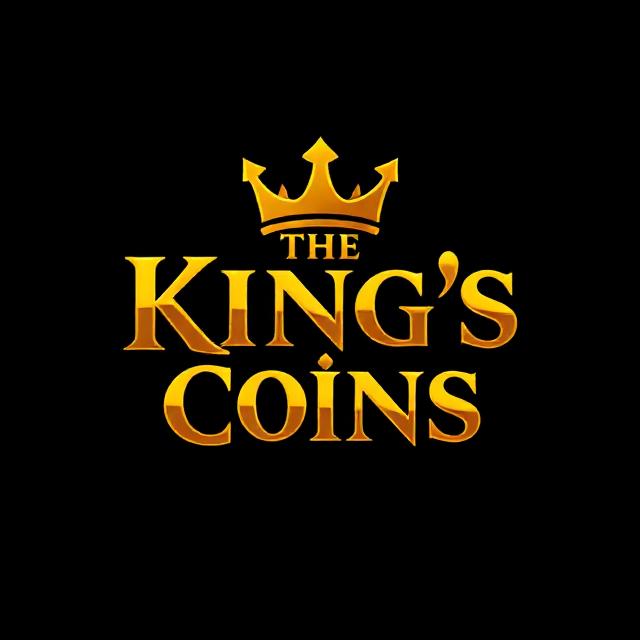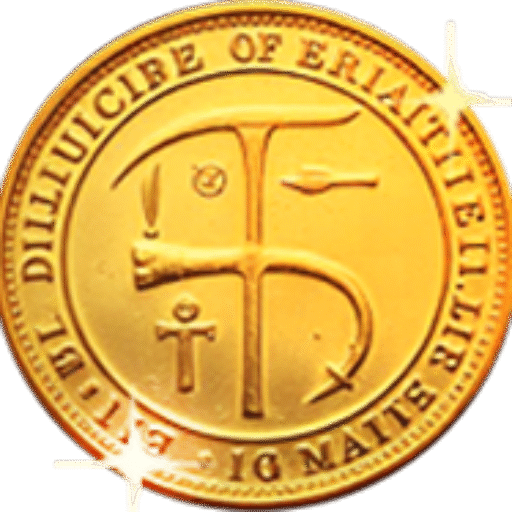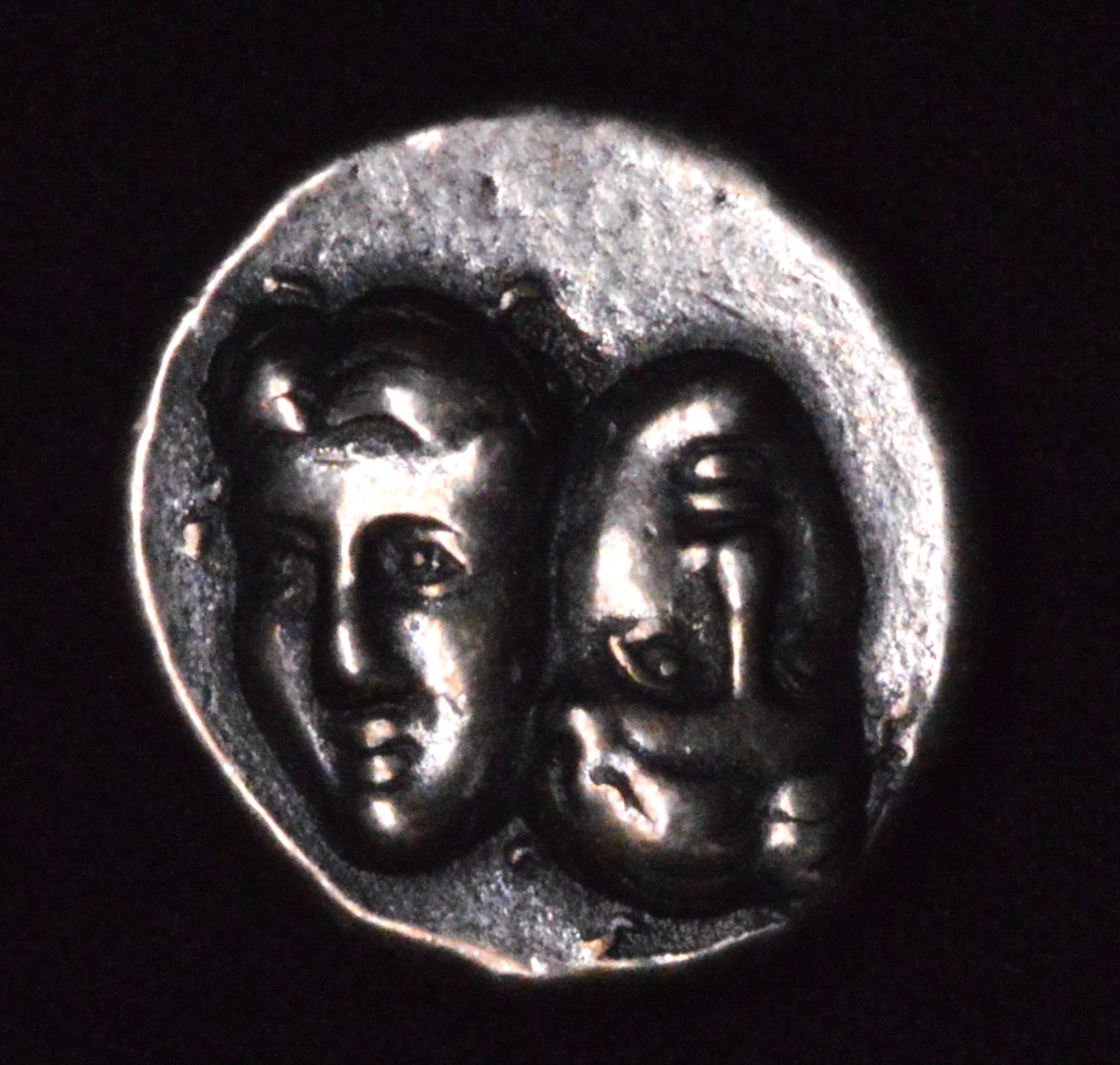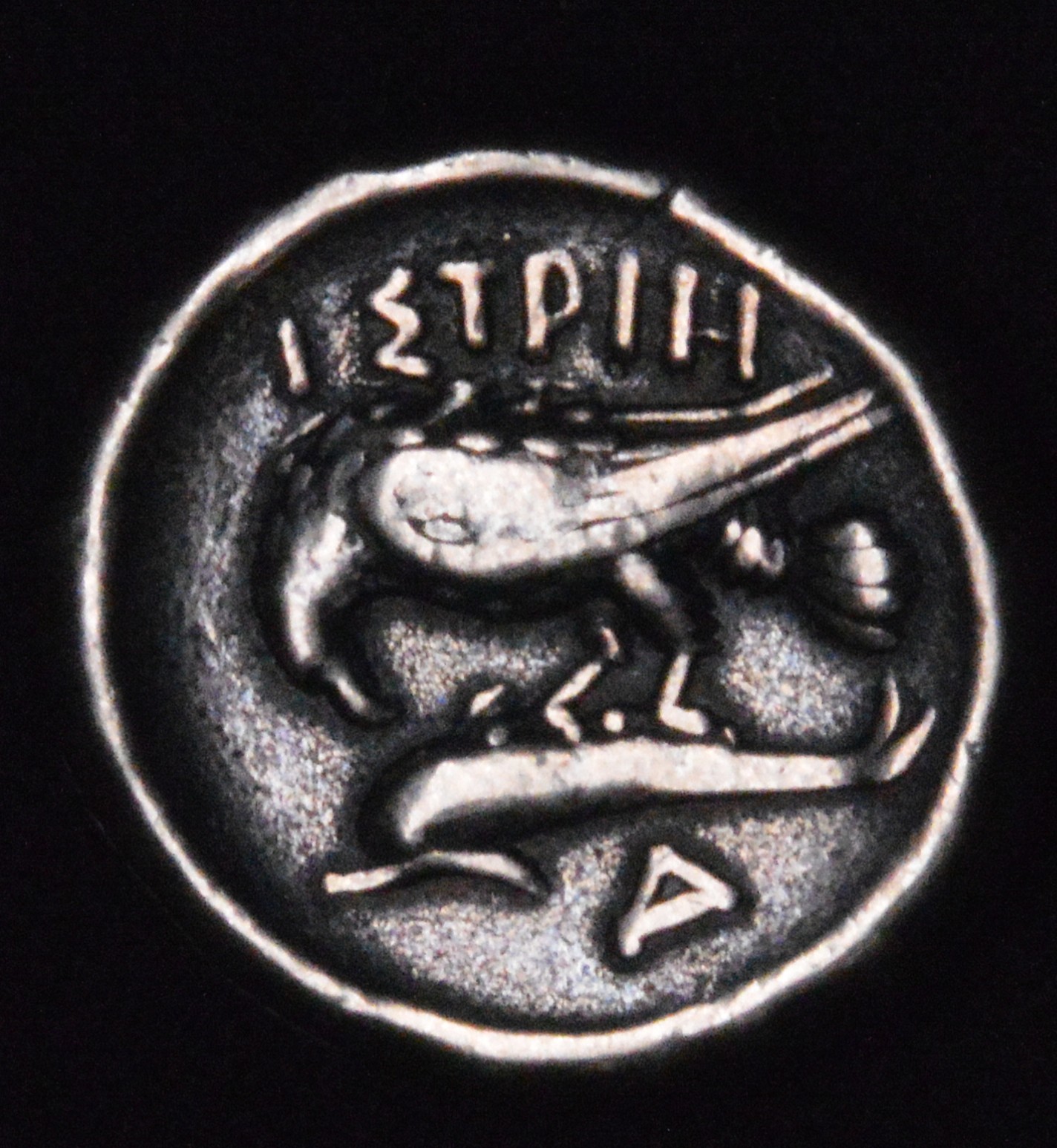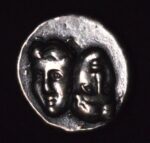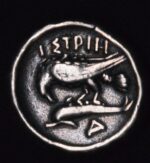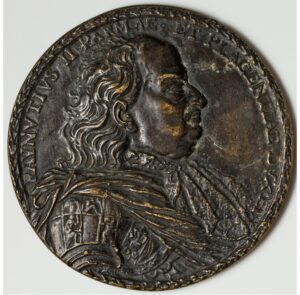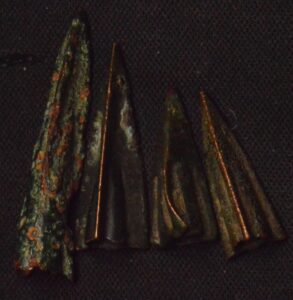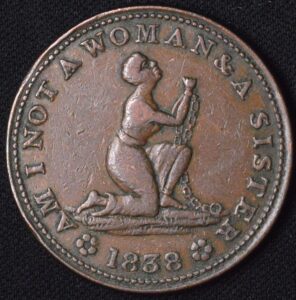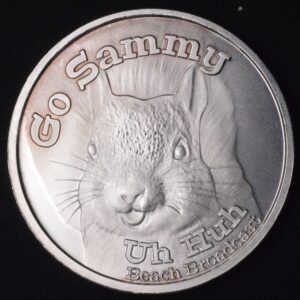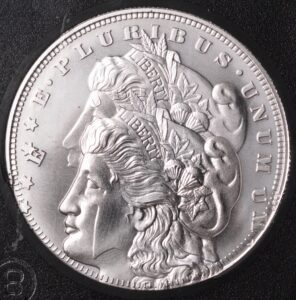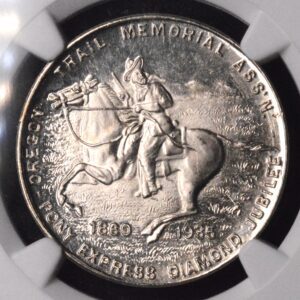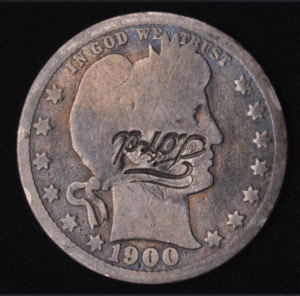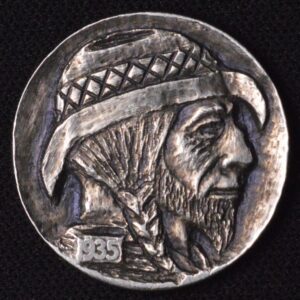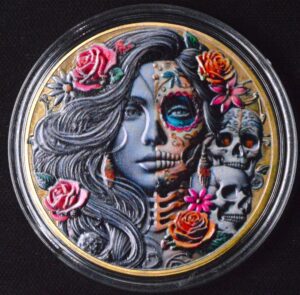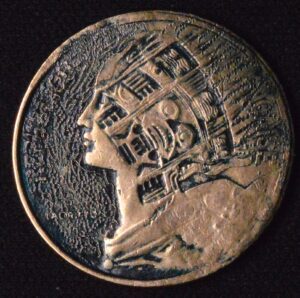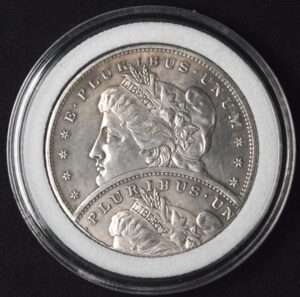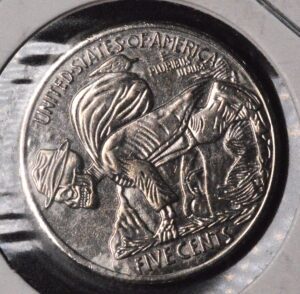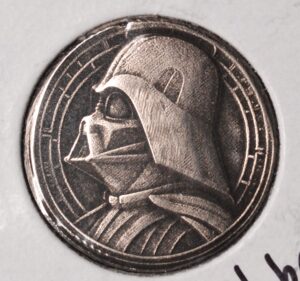Description
The Greek Istros silver coin with the doubled-headed design is an ancient drachm minted around 400 B.C. by the city of Istros, a Greek colony located on the western coast of the Black Sea in present-day Romania. This coin is notable for its unique obverse featuring two heads in profile, facing opposite directions, a rare and intriguing motif in Greek numismatics. The exact symbolism of the two heads is debated; they may represent gods, mythical figures, or dual aspects of the city’s identity, such as its military and economic strength or its connection to both Greek and local culturesἼστρος.
On the reverse, the coin displays an eagle perched on a dolphin, a powerful combination symbolizing strength, divine power (often linked to Zeus), and maritime prowess. The eagle represents the city’s military might and divine favor, while the dolphin symbolizes the sea and navigation, highlighting Istros’s reliance on maritime trade and its strategic position. This imagery conveyed the city’s political authority and cultural significance in the ancient Greek and Black Sea worlds.
The double-headed Istros coins are part of a larger series, often called “Apollonian silvers,” depicting dual portraits of the sun god Apollo with one head inverted, adding to their uniqueness. Some researchers have suggested these coins commemorate significant astronomical events, such as solar eclipses, visible from Istros, with the two heads symbolizing the changing sun during such events. This rare design feature makes the coin an important artifact reflecting both the city’s historical context and its engagement with astronomical phenomena.
Istros was an influential city known for maritime trade and cultural interaction between Greeks, Scythians, and Thracians. The coinage reflects this cosmopolitan identity and served both economic and propagandistic functions, promoting the city’s wealth, power, and divine protection. The high silver content and detailed artistic quality of these drachms make them prized among collectors and historians alike, providing valuable insight into the political and cultural atmosphere of the ancient Greek world around the Black Sea.
In summary, the Greek Istros silver doubled-headed coin is a fascinating and rare example of ancient Greek coinage featuring two opposing heads on the obverse and an eagle on a dolphin on the reverse. It symbolizes the city’s dual identity, military and economic power, and connection to divine protection and maritime strength. This coin is both a valuable collectible and a rich historical artifact representing a unique aspect of Greek numismatics and ancient Black Sea culture.
The Greek Istros silver coin with the doubled-headed design is an ancient drachm minted around 400 B.C. by the city of Istros, a Greek colony located on the western coast of the Black Sea in present-day Romania. This coin is notable for its unique obverse featuring two heads in profile, facing opposite directions, a rare and intriguing motif in Greek numismatics. The exact symbolism of the two heads is debated; they may represent gods, mythical figures, or dual aspects of the city’s identity, such as its military and economic strength or its connection to both Greek and local culturesἼστρος.
On the reverse, the coin displays an eagle perched on a dolphin, a powerful combination symbolizing strength, divine power (often linked to Zeus), and maritime prowess. The eagle represents the city’s military might and divine favor, while the dolphin symbolizes the sea and navigation, highlighting Istros’s reliance on maritime trade and its strategic position. This imagery conveyed the city’s political authority and cultural significance in the ancient Greek and Black Sea worlds.
The double-headed Istros coins are part of a larger series, often called “Apollonian silvers,” depicting dual portraits of the sun god Apollo with one head inverted, adding to their uniqueness. Some researchers have suggested these coins commemorate significant astronomical events, such as solar eclipses, visible from Istros, with the two heads symbolizing the changing sun during such events. This rare design feature makes the coin an important artifact reflecting both the city’s historical context and its engagement with astronomical phenomena.
Istros was an influential city known for maritime trade and cultural interaction between Greeks, Scythians, and Thracians. The coinage reflects this cosmopolitan identity and served both economic and propagandistic functions, promoting the city’s wealth, power, and divine protection. The high silver content and detailed artistic quality of these drachms make them prized among collectors and historians alike, providing valuable insight into the political and cultural atmosphere of the ancient Greek world around the Black Sea.
In summary, the Greek Istros silver doubled-headed coin is a fascinating and rare example of ancient Greek coinage featuring two opposing heads on the obverse and an eagle on a dolphin on the reverse. It symbolizes the city’s dual identity, military and economic power, and connection to divine protection and maritime strength. This coin is both a valuable collectible and a rich historical artifact representing a unique aspect of Greek numismatics and ancient Black Sea culture.
The Greek Istros silver coin with the doubled-headed design is an ancient drachm minted around 400 B.C. by the city of Istros, a Greek colony located on the western coast of the Black Sea in present-day Romania. This coin is notable for its unique obverse featuring two heads in profile, facing opposite directions, a rare and intriguing motif in Greek numismatics. The exact symbolism of the two heads is debated; they may represent gods, mythical figures, or dual aspects of the city’s identity, such as its military and economic strength or its connection to both Greek and local culturesἼστρος.
On the reverse, the coin displays an eagle perched on a dolphin, a powerful combination symbolizing strength, divine power (often linked to Zeus), and maritime prowess. The eagle represents the city’s military might and divine favor, while the dolphin symbolizes the sea and navigation, highlighting Istros’s reliance on maritime trade and its strategic position. This imagery conveyed the city’s political authority and cultural significance in the ancient Greek and Black Sea worlds.
The double-headed Istros coins are part of a larger series, often called “Apollonian silvers,” depicting dual portraits of the sun god Apollo with one head inverted, adding to their uniqueness. Some researchers have suggested these coins commemorate significant astronomical events, such as solar eclipses, visible from Istros, with the two heads symbolizing the changing sun during such events. This rare design feature makes the coin an important artifact reflecting both the city’s historical context and its engagement with astronomical phenomena.
Istros was an influential city known for maritime trade and cultural interaction between Greeks, Scythians, and Thracians. The coinage reflects this cosmopolitan identity and served both economic and propagandistic functions, promoting the city’s wealth, power, and divine protection. The high silver content and detailed artistic quality of these drachms make them prized among collectors and historians alike, providing valuable insight into the political and cultural atmosphere of the ancient Greek world around the Black Sea.
In summary, the Greek Istros silver doubled-headed coin is a fascinating and rare example of ancient Greek coinage featuring two opposing heads on the obverse and an eagle on a dolphin on the reverse. It symbolizes the city’s dual identity, military and economic power, and connection to divine protection and maritime strength. This coin is both a valuable collectible and a rich historical artifact representing a unique aspect of Greek numismatics and ancient Black Sea culture.
CUSTOMER FEEDBACK








Related Products & Newly Released!




SHIPPING POLICY
Your order is shipped from the United States with USPS tracking within one business day.
14 Day Return Policy
You can return your item back within
14 days of the purchase

Secure payments
Your payments are 100% secure and are processed through Square or PayPal on a protected security network.
SHIPPING POLICY
FREE International and Domestic (United States) shipping. Your order is shipped with USPS tracking 24 hours after you order.
14 Day Return Policy
You can return your item back within
14 days of the purchase

Secure payments
Your payments are 100% secure and are processed through Square or PayPal on a protected security network.
RESOURCES
support
Get Real Deals!
Sign up now to receive our articles for the latest insights and promotions!
RESOURCES
support
Get Fresh Articles!
Signup our newsletter to get update insight or promotions.
